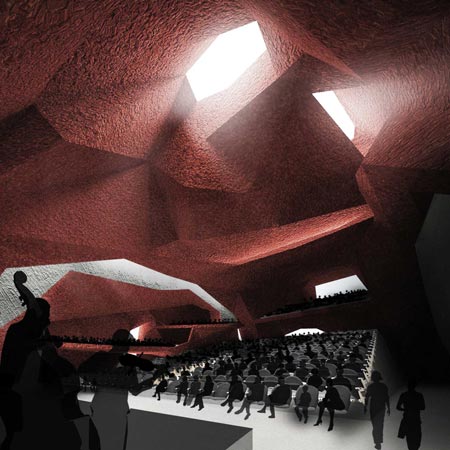
Jordanék Music Hall by Menis Arquitectos
Tenerife architects Menis Arquitectos have designed a music hall in Torún, Poland.

Two separate music halls, of 3000 and 1000 seats respectively, can be joined together to create one space for large performances.
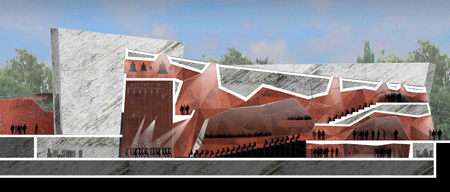
The site is located on a plot of land between the medieval old town and a modern development.
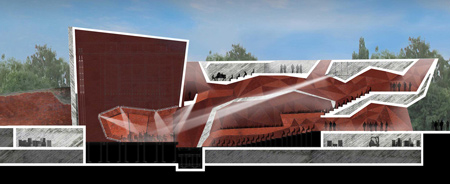
The architects used white concrete for the exterior and red brick for the interior, which they claim is "a way of outlining the relationship between the traditional use of bricks, and the technology and modernity of new urban developments."
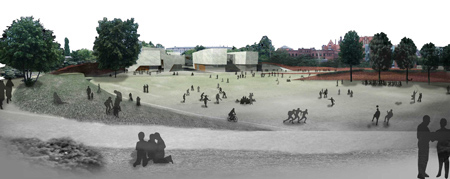
The design was the winning entry in a competition organised by the Municipality of Torún, which is one of the the candidates for the European Capital of Culture in 2016.
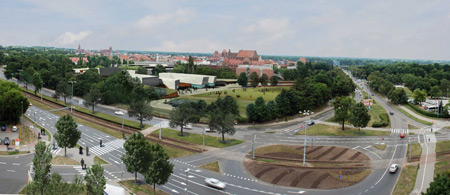
The project is due to be completed later in 2009.
The information below is from Menis Arquitectos:
--
Jordanék Music Hall. Torún. Poland
The Jordanek plot is located between Torún’s old town, protected by UNESCO, and the new development area of the city. The Municipality of Torún wanted a building which, when inserted into a wider programme, could integrate the cultural and natural landscape. Half the plot is planned as a park since the proximity to the green area requires a large open space. On the other hand, the panoramic view from the river, quoted as the second “miracle” of architecture and landscape in Poland, must remain untouched therefore the height of the Music Hall must be as low as possible.
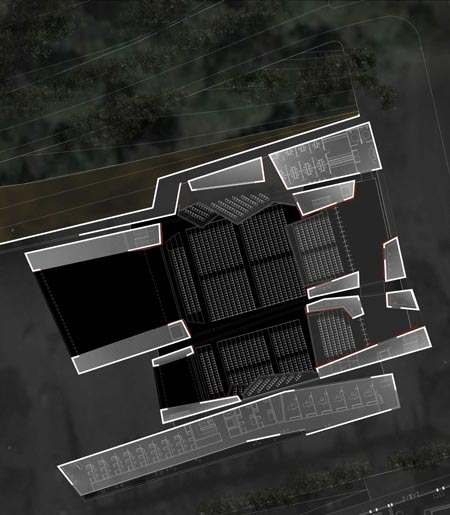
The Music Hall provides a solution for the fusion between old and new and that is partly achieved through the construction materials. For the interior, bricks will be used which recall the façades of the old town. For the exterior, very clear, almost white concrete will be used, which in some place is “broken” by cracks which reveal the interior coating. The façade reinterprets the traditional handicraft of the bricks and establishes a parallel between the tectonics of the city and the strategic situation of the plot. The 2 colours - red and white – are also a way of outlining the relationship between the traditional use of bricks and the technology and modernity of new urban developments.
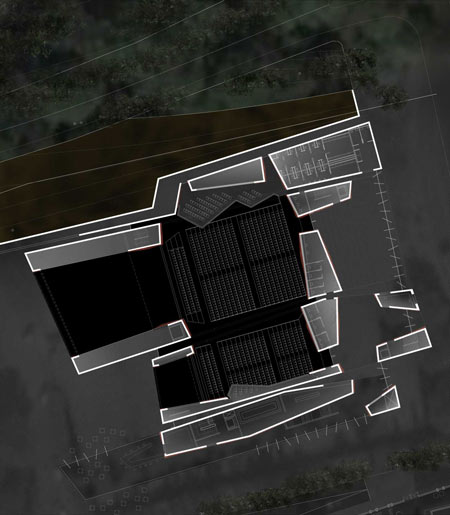
Fernando Menis, the designer of the project, likes to explain the volume of the concert halls by describing the experience of eating an appreciated polish dish called Zurek. This is a traditional soup presented in a round bread, made into a bowl by removing the crumbs. In the building, the exterior skin stays rigid, while inside the fluid nature of the building accommodates different functions, similar to the different ingredients of the soup. It is through the cracks or holes made in this bowl that one can perceive the organic and continuous nature of the interior space.
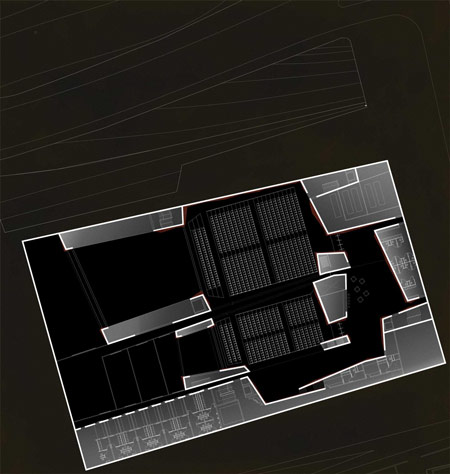
Regarding the programme, there is a particular solution which makes it possible to turn the 2 halls, of 1000 and 3000 seats respectively, into just 1 hall in the case of big performances. The building is therefore able to shelter different types of events and can adapt to a wide variety of situations.
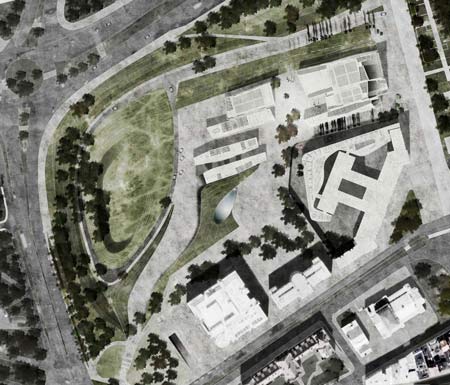
MUSIC HALL JORDANEK, TORÚN, POLAND, 2008
PROJECT ARCHITECT: Fernando Menis
COLLABORATORS: Menis arquitectos - Karolina Mysiak, Sergio Bruns Benegas, Roberto Delgado Díaz, Pruden Arnau Orenga, Juan Alberto Bercedo Bello, Antonio Martínez Hernández and Juan Enrique Saiz Martín.
INSTALLATIONS: Milian Associats S.A
STRUCTURE: Martínez Segovia Fernández, Pallas y Asociados, S.A.
ACOUSTIC: Pedro Cerdá Lacaci
CLIENT: Municipality of Torún
LOCATION: Jordanek, Toruń. Polonia
TOTAL SURFACE OF THE PLOT: 7ha. Jordanek
TOTAL CONSTRUCTED SURFACE:
Concerts hall: TOTAL 6471m sq
Concerts hall+2 floors of underground parking: TOTAL 12085 m sq